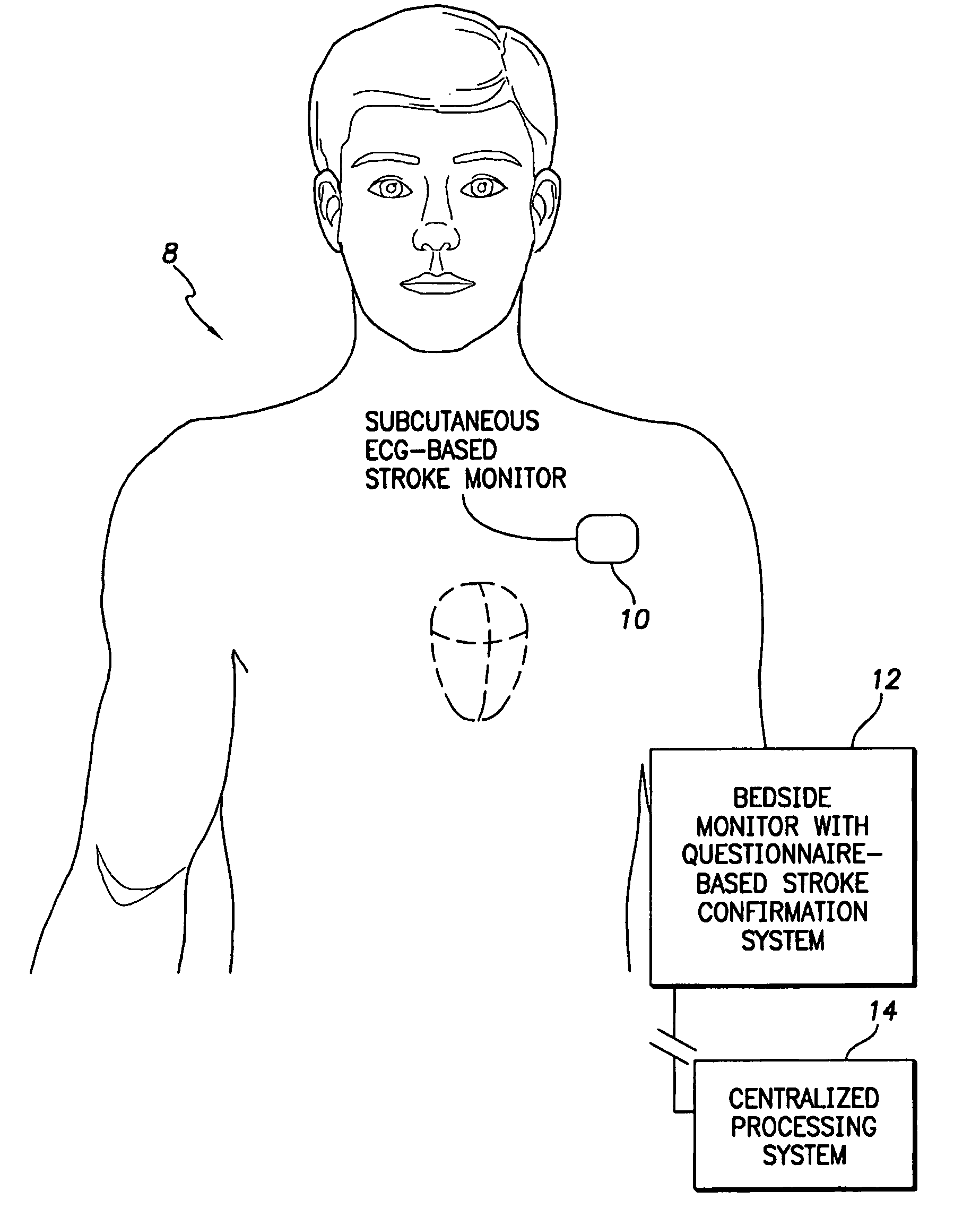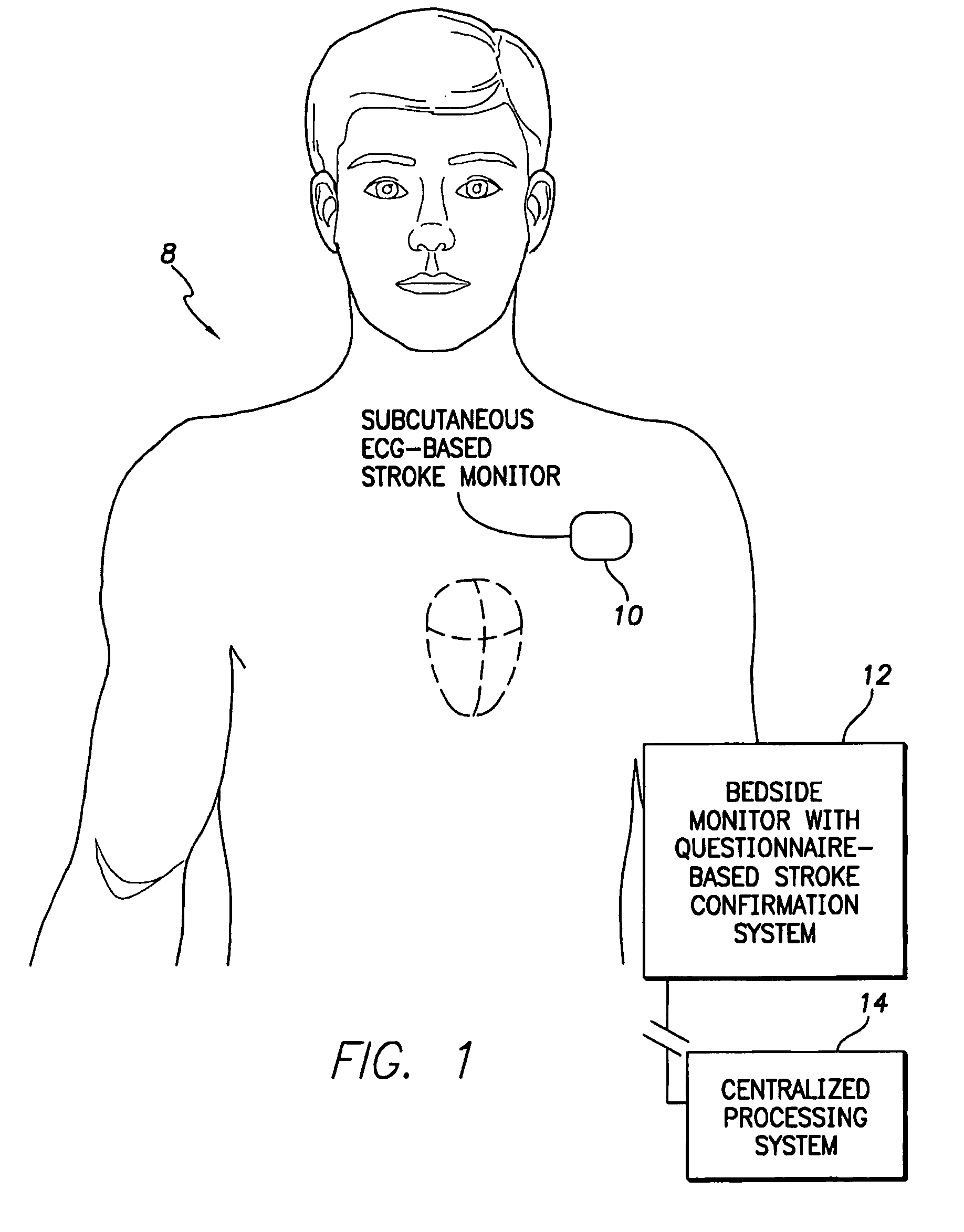Systems and methods for use with an implantable medical device for detecting stroke based on electrocardiac signals
a technology of electrocardiac signals and implantable medical devices, applied in bioelectric signal measurement, medical science, diagnostics, etc., can solve the problems of devastating consequences, many survivors left seriously and permanently impaired
- Summary
- Abstract
- Description
- Claims
- Application Information
AI Technical Summary
Benefits of technology
Problems solved by technology
Method used
Image
Examples
Embodiment Construction
[0020]The following description includes the best mode presently contemplated for practicing the invention. This description is not to be taken in a limiting sense but is made merely to describe general principles of the invention. The scope of the invention should be ascertained with reference to the issued claims. In the description of the invention that follows, like numerals or reference designators are used to refer to like parts or elements throughout.
Overview of ECG-Based Stroke Detection System
[0021]Referring first FIG. 1, a broad overview of components of an exemplary embodiment of the invention will now be provided. Briefly, FIG. 1 illustrates an ECG-based stroke detection system 8 having a subcutaneously-implanted stroke monitor 10 for detecting a stroke within the patient based on an analysis of ECG signal and an external bedside monitor 12 for confirming the stroke and / or for generating suitable warning signals. In a preferred embodiment, the implanted stroke monitor 10...
PUM
 Login to View More
Login to View More Abstract
Description
Claims
Application Information
 Login to View More
Login to View More - R&D
- Intellectual Property
- Life Sciences
- Materials
- Tech Scout
- Unparalleled Data Quality
- Higher Quality Content
- 60% Fewer Hallucinations
Browse by: Latest US Patents, China's latest patents, Technical Efficacy Thesaurus, Application Domain, Technology Topic, Popular Technical Reports.
© 2025 PatSnap. All rights reserved.Legal|Privacy policy|Modern Slavery Act Transparency Statement|Sitemap|About US| Contact US: help@patsnap.com



